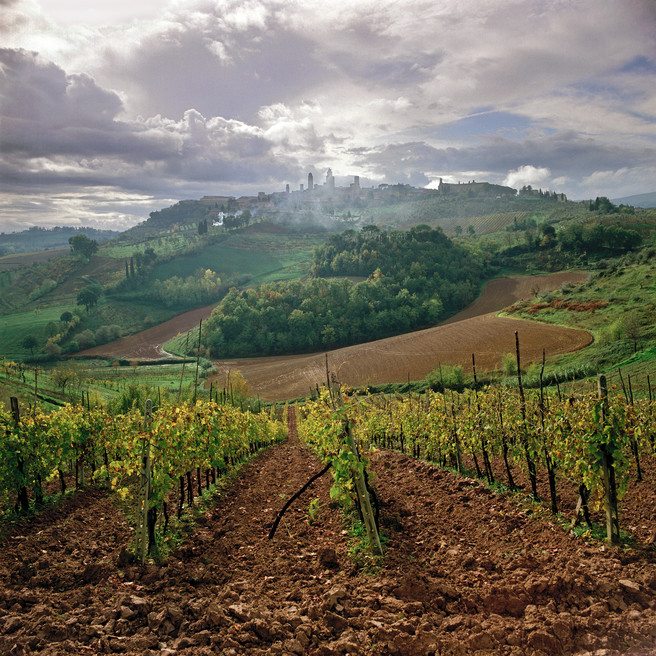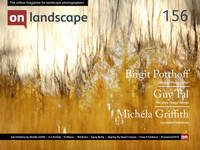Phil Brown chooses one of his favourite images

Phil Brown
Phil Brown is an enthusiast photographer. Born in Portsmouth Phil spent his youth wondering around the countryside taking photographs of anything that took his fancy and developed a love of the landscape. After many years than he cares to remember working in the rail industry, he now lives with his wife in Hampshire and now has more time on his hands to concentrate on his hobby.
philbrownphotography.zenfolio.com
I was reading a photographic article the other day that made me laugh - not that it was a funny article, because it wasn’t, but the premise was very much grounded in the current zeitgeist The author of the piece was bemoaning that a certain up-and-coming photographer seemed obsessed with using square format for his images, as if to replicate Instagram and there derive a following amongst his selected audience. It may well be that the photographer in question wished to encompass the square format into his ‘style’ and that he may have wanted to create an association between his vision and that of the users of the aforementioned application. I don’t know, but what I do know is that whilst I might have been laughing at the seeming lack of historical photographic knowledge in the article, I was also acknowledging my age, as I remember clearly my early experiments with an ancient square format camera!
A few days later I was contacted by Charlotte Britton, who enquired if I would be interested in writing a piece for the End Frame section of On Landscape. At first, I thought I would be the last person to write about a favourite photograph, but as a few days went past I recalled my reaction to reading the critic’s view. I realized that here was my chance to write about the origination of the square format, whilst explaining why I believe it still resonates with the British landscape photography community.'
In 1900, Kodak introduced the 117 file type for their first Brownie camera, the No.1 Brownie, designed as a 6×6 cm format. Until then there had been a series of different formats, but Kodak saw this particular format as being ideal for the amateur photographer. The coming years saw many developments and other formats came and went, but still, the equal-sided frame refused to go away; it resisted being consigned to the confines of museum store rooms. However, it does appear, at first glance, not best suited to the landscape photographic genre.
That is until the day I stumbled across a George Philip guide to Tuscany, one of a series of guides written by various notable travel writers, in this instance Jonathan Keates, accompanied with photographs by two then up-and-coming but now well-known photographers, a certain Joe Cornish and a person with a theatrical background, Charlie Waite. Charlie had got the commission to illustrate this particular guidebook, and I was mesmerized by his photographic accomplishments using a tried and trusted square format Hasselblad. His abilities encompassed far more than just landscape shots, which no doubt his brief demanded, but it was by far those landscape images that struck home with me.
Two years later, Charlie released a seminal book (as far as I am concerned!), ‘The making of Landscape Photographs’ in which, page after page, he demonstrated his utmost skill in making the most exquisite and sublime images with his Hasselblad. And one image, in particular, stood out to me: ‘Calm, San Gimignano, Tuscany’.

Even today, after all these years, the hairs on the back of my neck stand on end when I look at this photograph. At the time I first set eyes on the image, I hadn’t been any further than the odd trip across the channel to France, so the world Charlie had created in this photograph was, whilst not exactly exotic, certainly seemingly out of reach to a relatively young and impoverished snapper. I have since visited San Gimignano on many occasions, both with and without the sprawling mass of tourists, but every time I look at Charlie’s image, it still evokes a sense of being there, on that calm autumn day as the leaves just begin to turn, smelling the wood smoke as it drifts across the valley and with the sun trying to make an appearance.
There is nothing dramatic about the photograph, no heavy clouds, no wind rippling across the vineyards, no raining pelting down. Equally, there is no frantic activity to catch the eye, no mechanical intrusions to one’s inner peace. Yes, we know an aeroplane has flown overhead, but the noise has diminished, leaving only the vapour trail hanging listlessly in the firmament.
Charlie is very self-critical of his work. In his notes regarding this photograph he mentions that he had to slightly compromise on his framing in order to exclude a red oil drum from the image; he had hoped for a more symmetrical view. However, I feel this slight asymmetry actually adds to the sense of depth and highlights the slope down to the valley in front of the escarpment that San Gimignano sits on.
There are of course other photographers that have employed the square format to their advantage, not least Fay Godwin, but somehow in this photograph, Charlie has demonstrated that using lines of perspective and tonal graduation, a sense of scale and depth can be achieved. By capturing this image on the day in question he has had no need to use extreme techniques or dramatic weather to engender a sense of being there, of experiencing the moment.
So here we have it, a photograph taken with a standard lens in a square format. It is not dramatic; the colours are not oversaturated. Indeed, it is a world away from the current perceived requirements of a landscape photograph, which tend to use both techniques together with extreme wide-angle lenses. It exudes serenity, at one with the world; in fact, it is the epitome of mindfulness.
I could have chosen a number of Charlie Waite’s square format photographs for an End Frame, but ultimately this image had to be the one, as for me it exemplifies the art of the consummate landscape photographer.
Do you have an image that you'd like to write about in our End Frame feature? We're looking for articles for our forthcoming issues, so please do get in touch!

